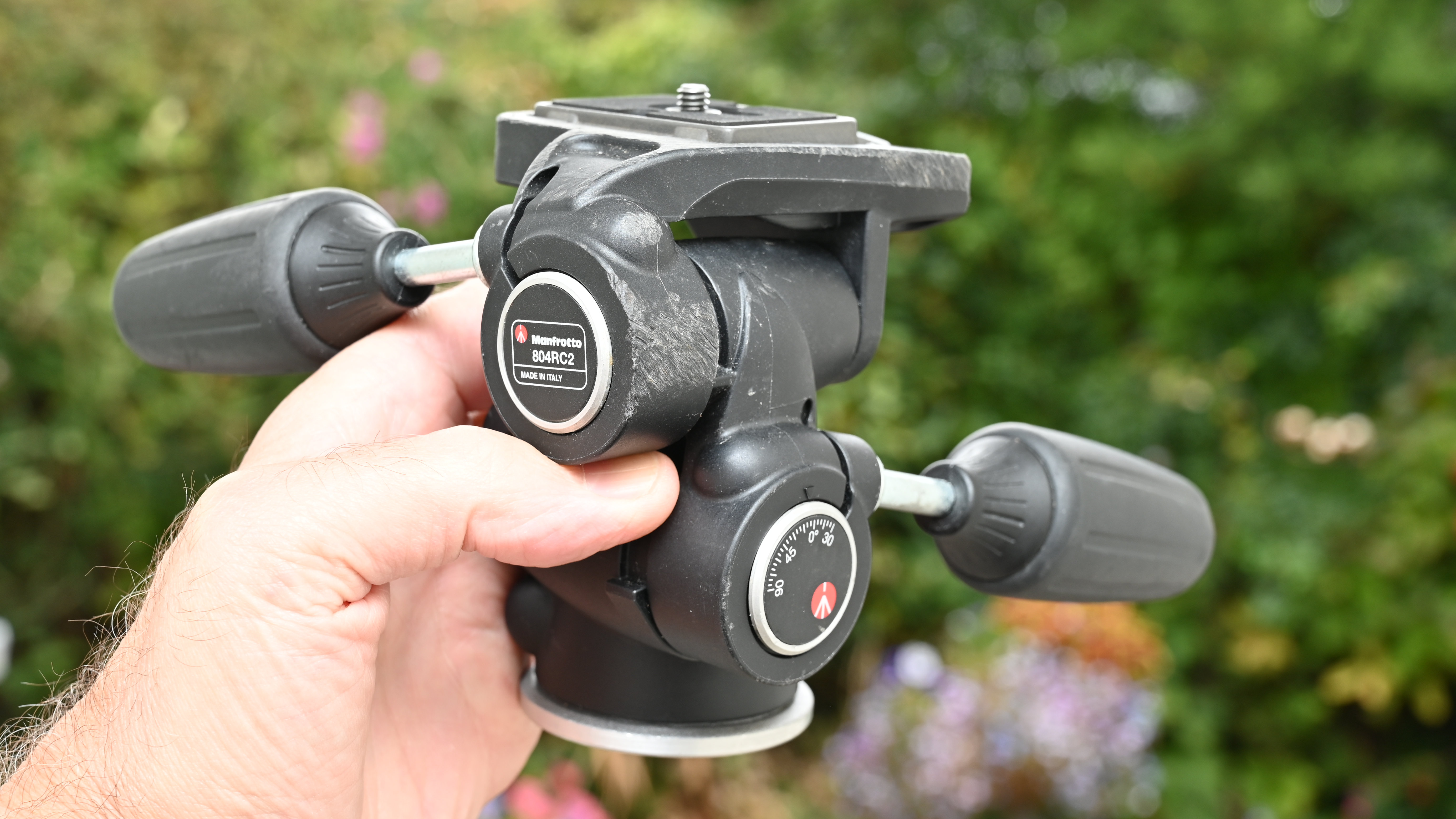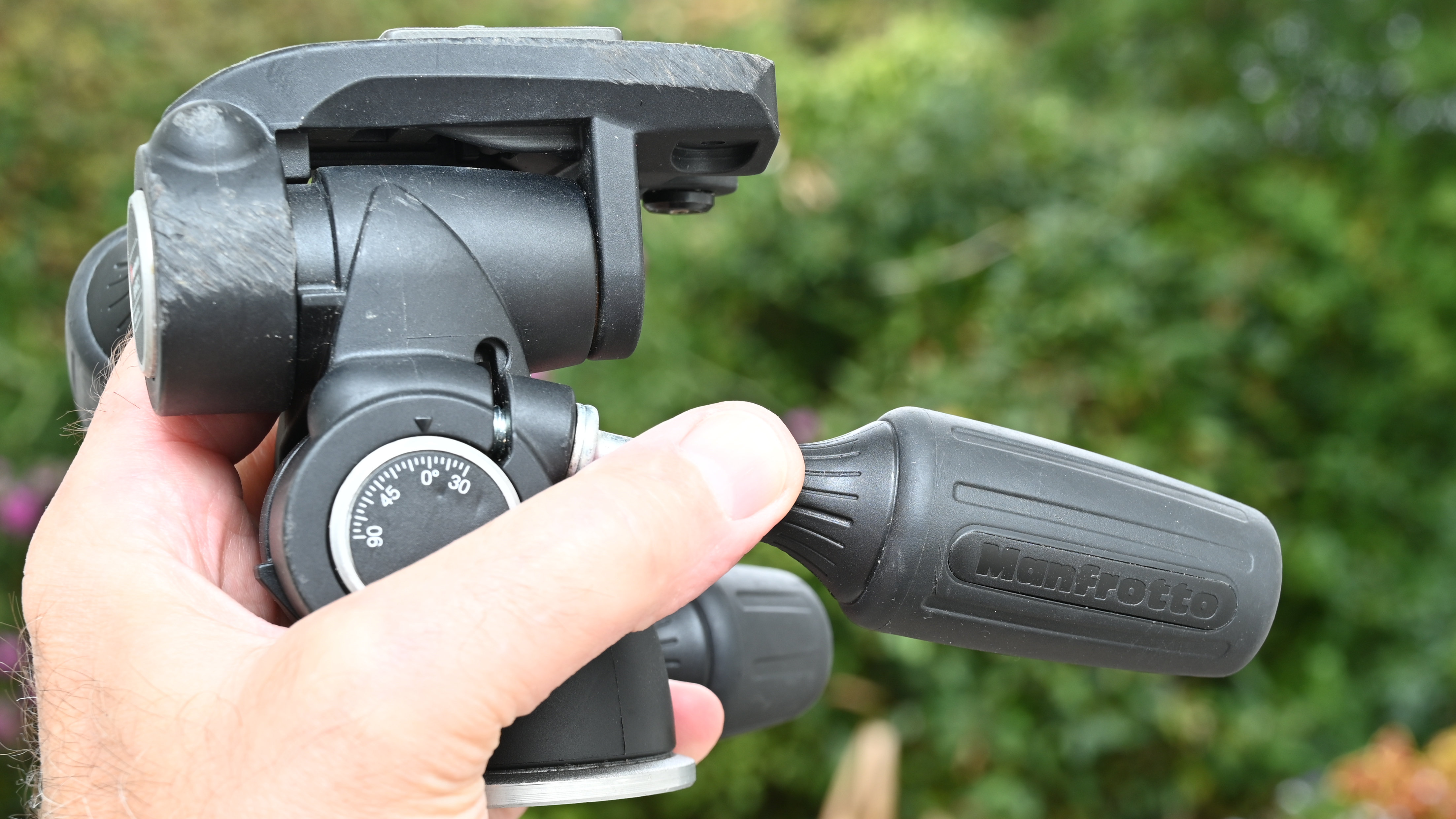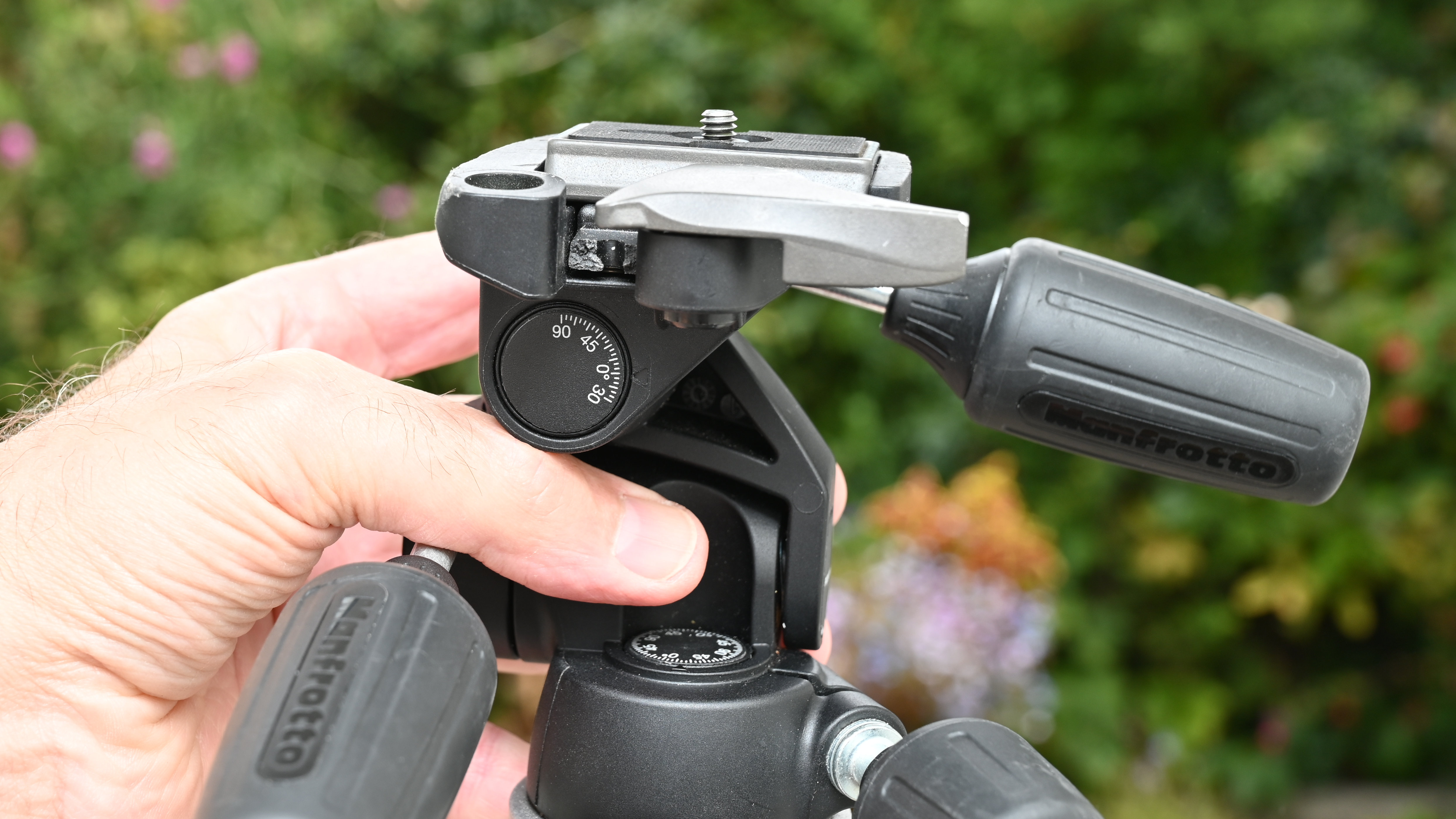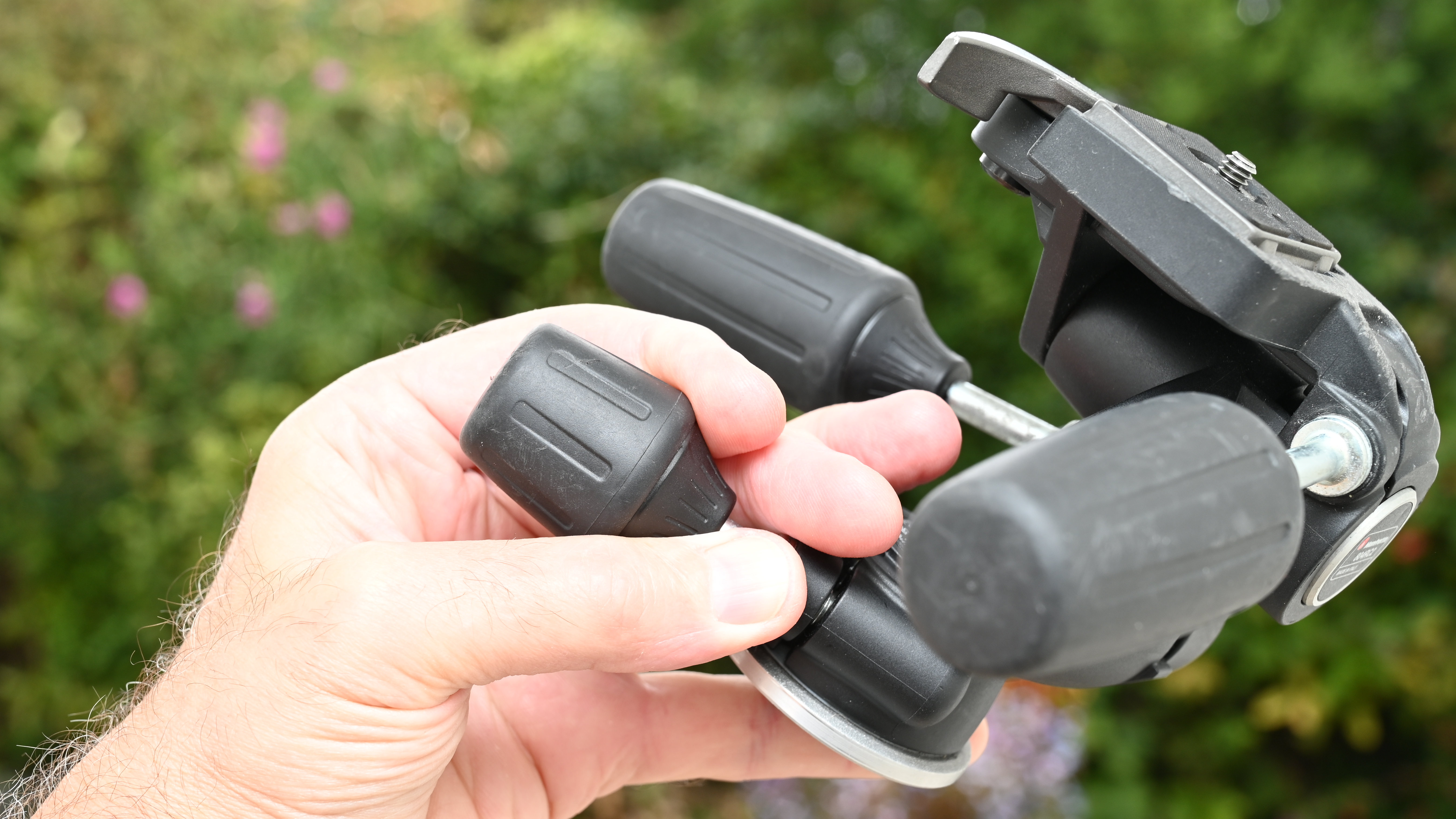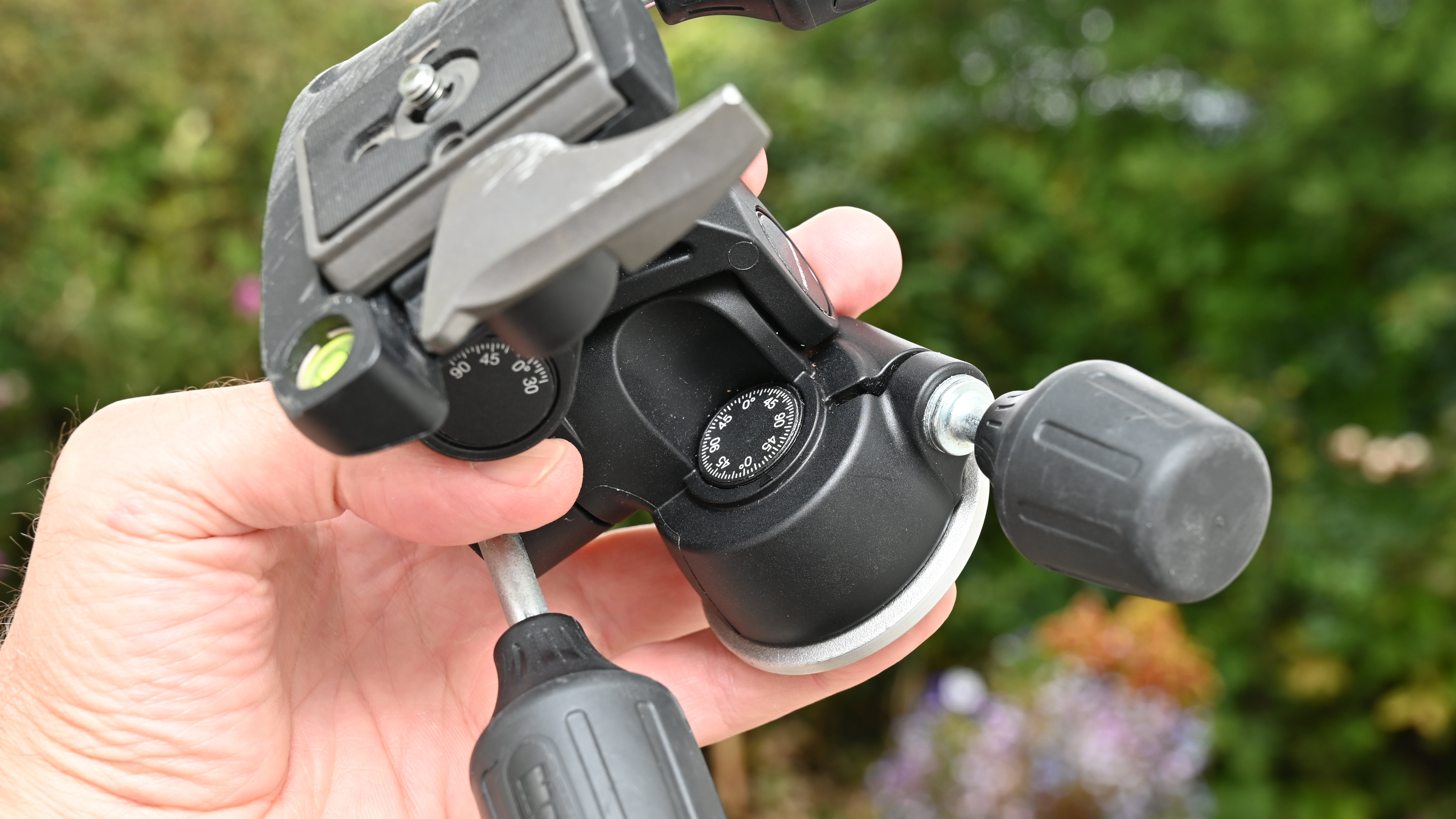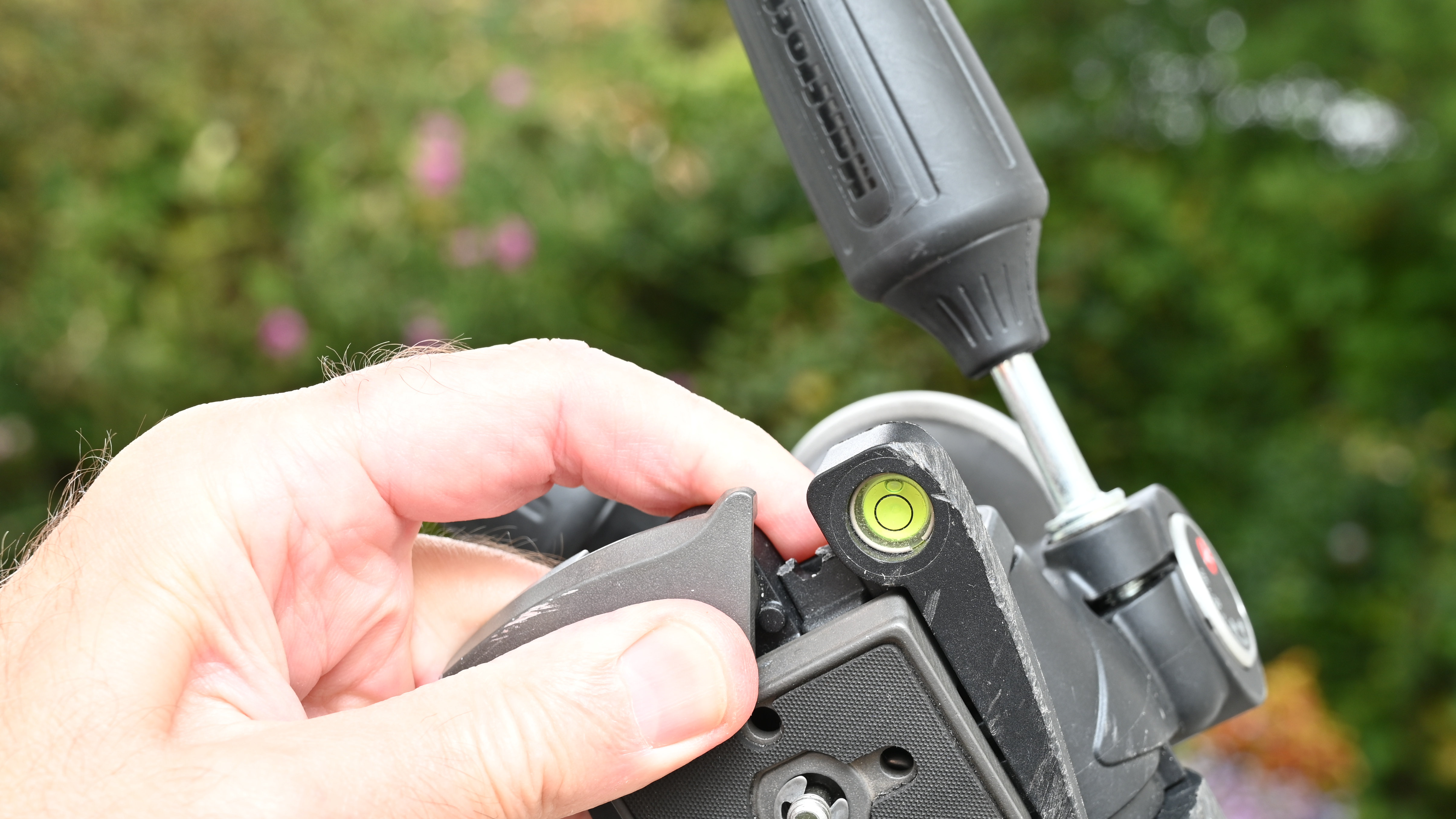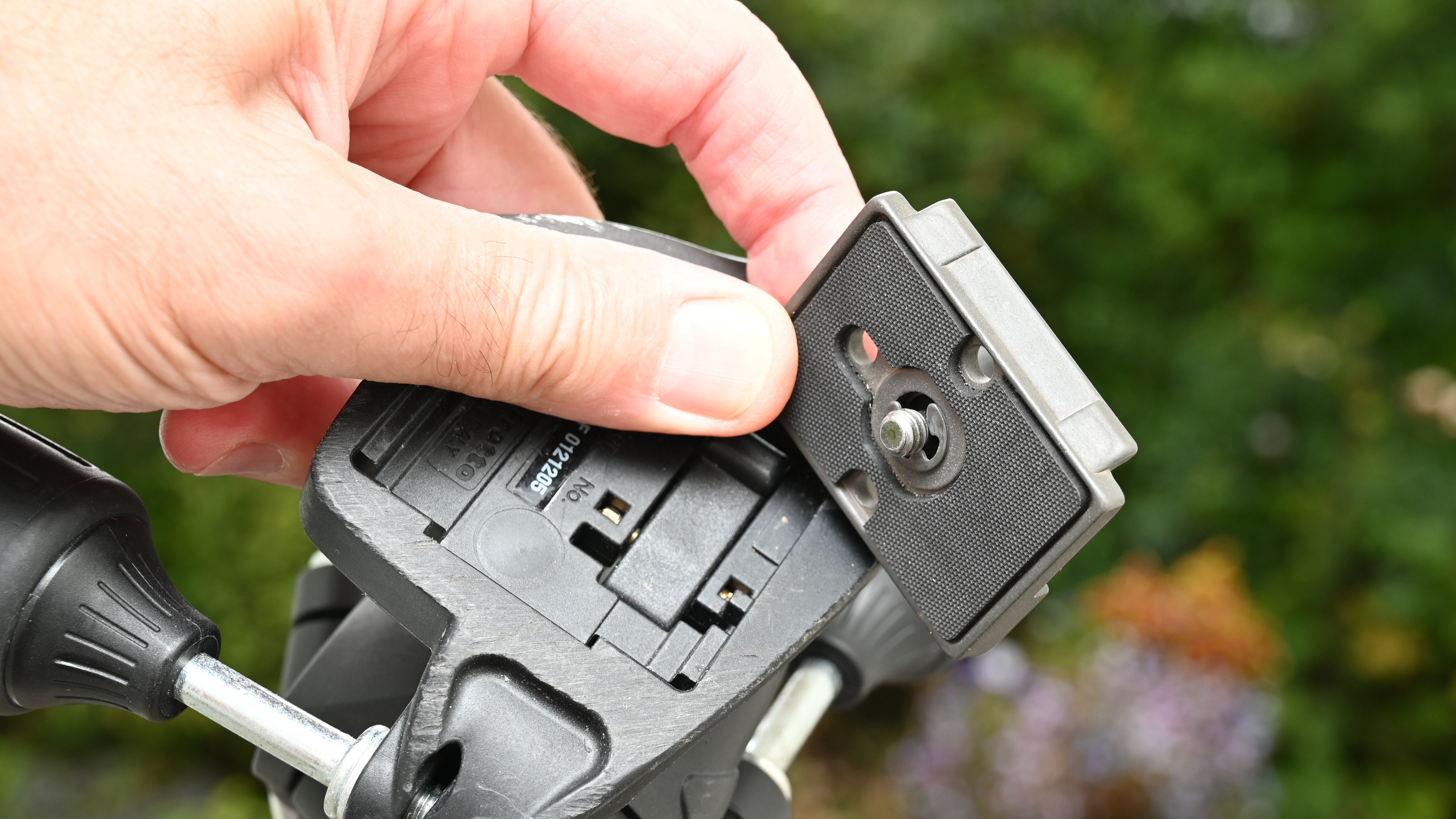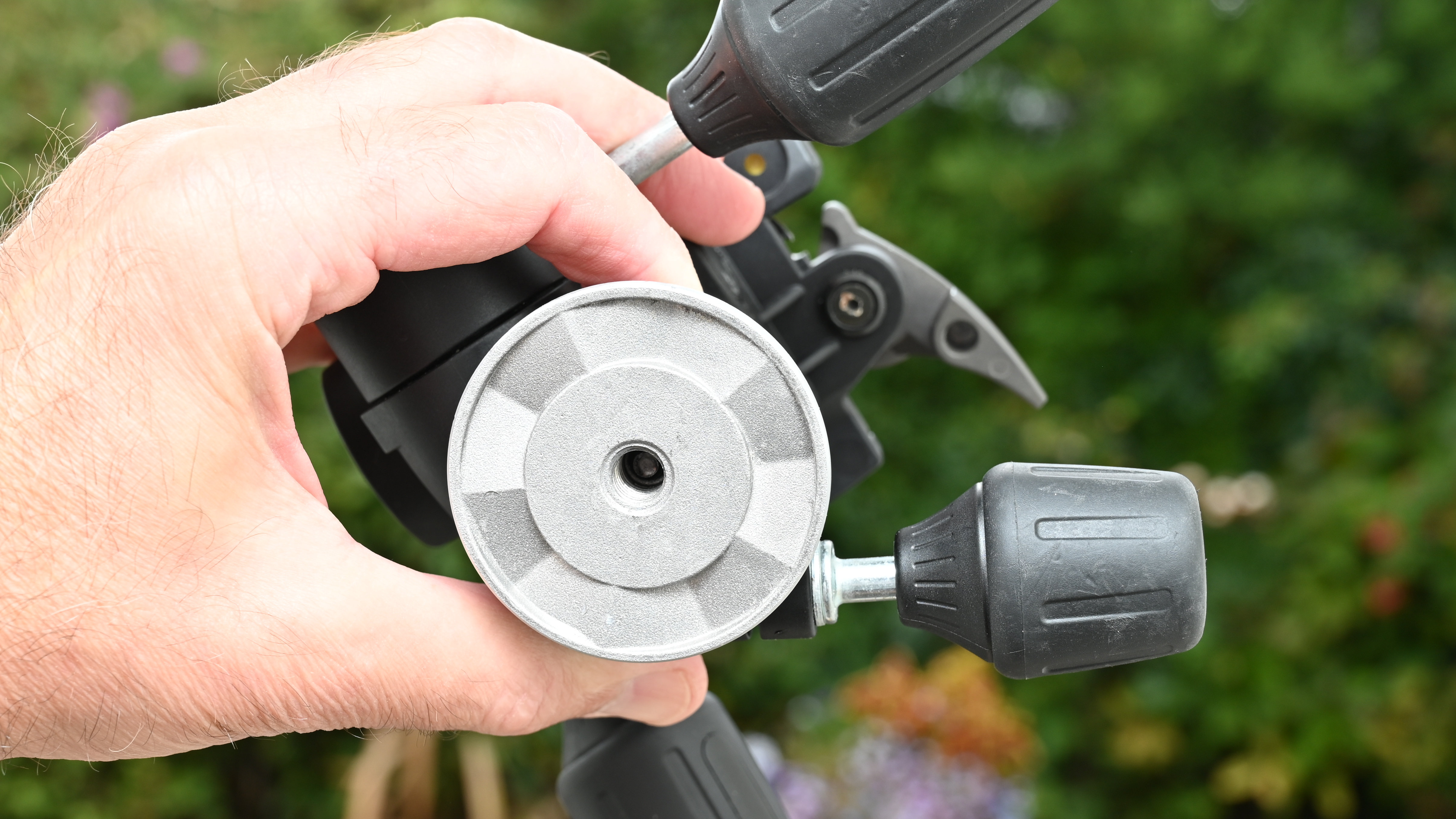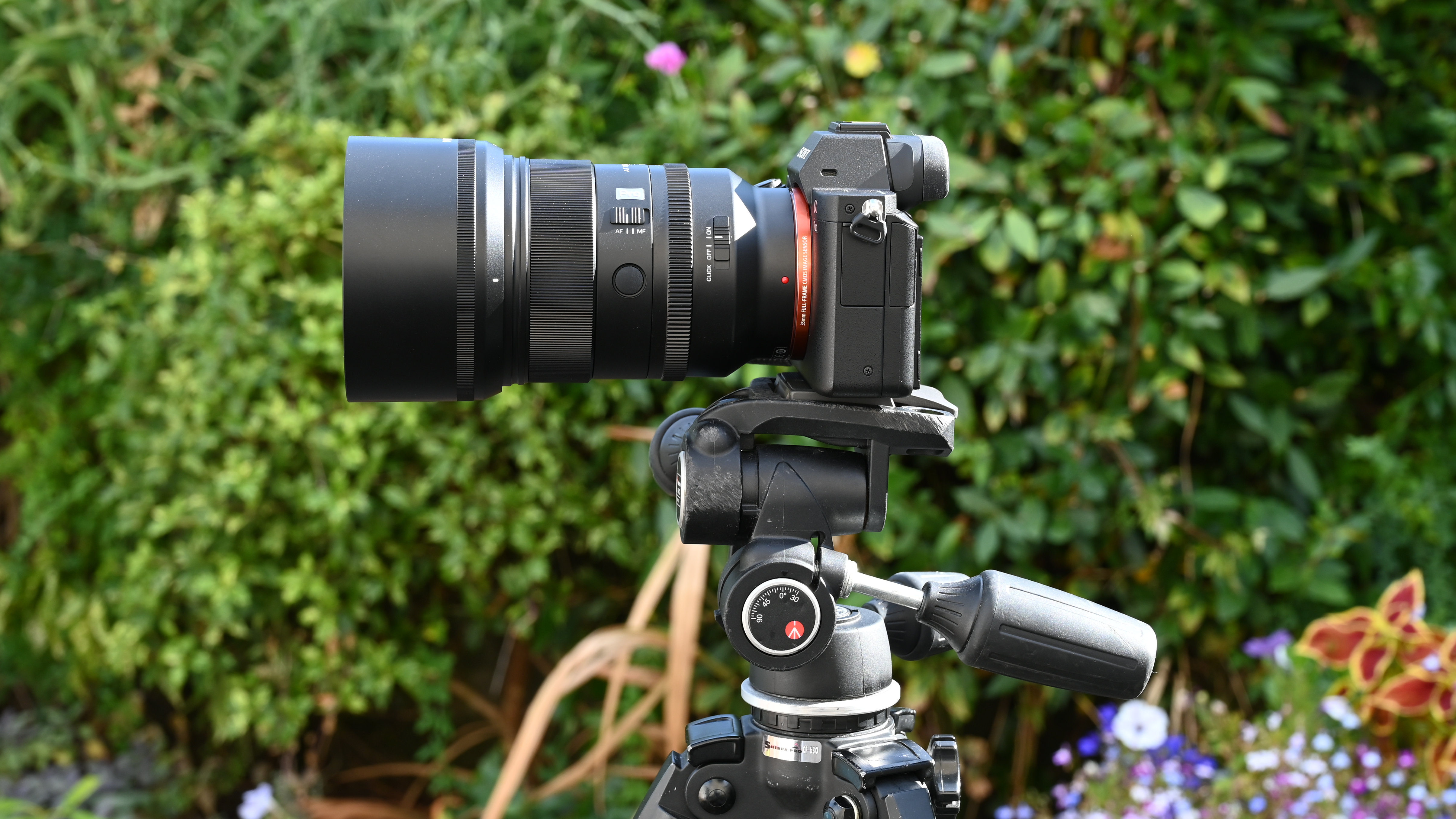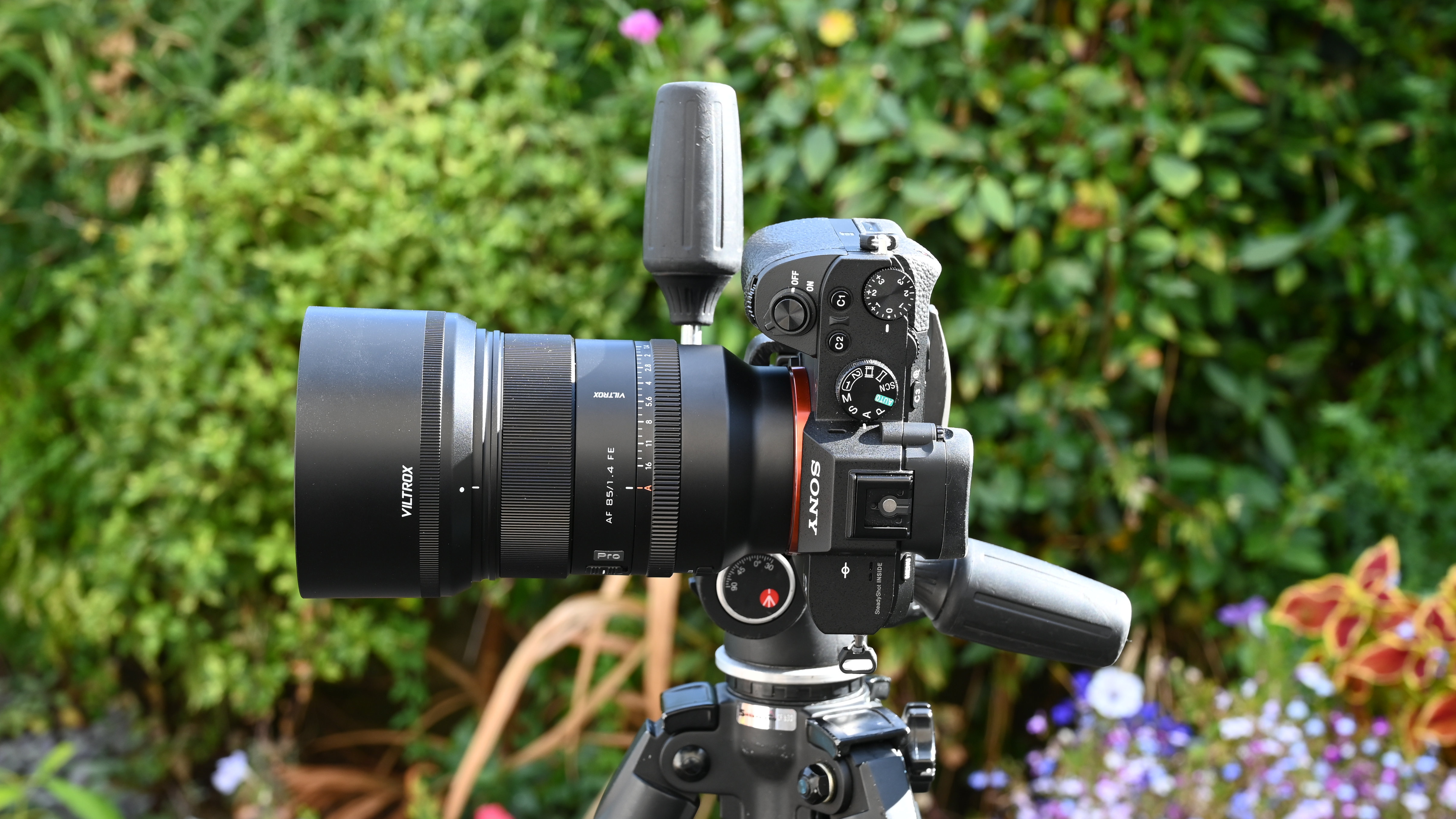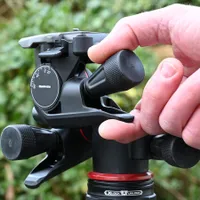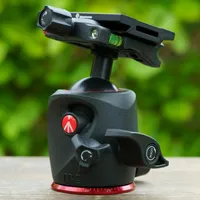Digital Camera World Verdict
My first impression on picking up the Manfrotto 804 3-way head was that it’s much lighter than it looks. That can be a good thing if you’re carrying a tripod head around all day long. But I feel that the plastic build slightly compromises rigidity and while it’s reasonably priced in Europe, you don’t get that much for your money if you’re buying it in the USA.
Pros
- +
Relatively compact and lightweight
- +
Strong 10kg / 22lb payload rating
- +
Inexpensive in Europe
Cons
- -
Rigidity could be better
- -
Fairly basic
- -
Pricey in USA
Why you can trust Digital Camera World
There’s nothing really wrong with plastic, although it’s been getting an awful lot of bad press lately. This Manfrotto tripod head certainly isn’t a ‘single-use plastic’ item, so that’s definitely something in its favor. In fact, it should last for years and indeed, Manfrotto is sufficiently confident in its build quality to offer a free 10-year warranty, as with most of its products.
I can bear testimony to its hard-wearing nature as the sample that I’m using for this review has pretty much been to hell and back, being used and abused by hard-working photographers on our team for many years. The plastic itself goes by the name of a ‘technopolymer’ or technical polymer, and it’s not the first time I’ve seen it. I actually own a Manfrotto XPRO Geared 3-way Head, which is made from the same material. That one aims to be one of the best geared heads, whereas the 804 that I’m reviewing here sets its sights on being one of the best 3-way heads.
Manfrotto 804 3-way head: Specifications
Material | Polymer |
Maximum load | 10kg / 22lb |
Base diameter | 60mm / 2.36in |
QR Plate type | 200LT-PL |
Locks | Tilt, pan, swivel |
Bubble/spirit levels | 1 bubble |
Height | 12cm / 4.7in |
Weight | 0.75kg / 1.65lb |
Manfrotto 804 3-way head: Price
The Manfrotto 804 is pretty good value in the UK but comparatively expensive in the USA and Australia. Selling for $147 / £89 / AU$239, it’s less expensive than the more heavy-duty Manfrotto X-PRO 3-way head which is made of aluminum rather than plastic. That’s entirely to be expected.
Manfrotto 804 3-way head: Design & Handling
Technopolymer or technical plastic tends to be lighter than aluminum and sure enough, this head is only three-quarters the weight of the aluminum Manfrotto X-PRO 3-way head, at 0.75kg / 1.65lb compared with the latter’s 1kg / 2.2lb. They’re roughly the same size, although the 804 is a little shorter, at 12cm / 4.7in versus 13cm / 5.1in. It also lacks the adjustable friction dampers for tilt and swivel, featured in the X-PRO 3-way head.
The head is labelled as a ‘Mark II’ in some regions, and as an ‘Adapto’ here and there. The main difference between older and newer models is that, again, like the X-PRO head, the newer version features retractable handles for tilt and swivel. As such, the rubberized parts that you grip with your hand can slide in and out on their metal shafts. Retracted, they cut down the stowage size of the head. Extended, they give you greater leverage for making adjustments.
A bonus of the 804 over the X-PRO is that you get calibrated scales for tilt, swivel and pan, instead of just for panning. The tilt range which you’d typically use for front/back adjustments has a scale on the side and a range of 30 degrees upwards and 90 degrees downwards. The 0-degree level position is clearly labelled, with -30, 45 and 90 degrees numbered on the scale, with 15-degree major intervals and 5-degree minor increments.
Similarly, the swivel adjustment nominally for swapping between portrait/landscape orientation shooting has a range of -30 degrees to 90 degrees, the scale again being marked in the same 5-degree increments and numbered in the same way.
The best camera deals, reviews, product advice, and unmissable photography news, direct to your inbox!
As is often the case with 3-way heads, the panning lock/release knob is somewhat smaller than the ones for tilt and swivel, and the shaft doesn’t extend so far. This time, as I’d expect, you get a full 360 degrees of panning rotation and again, it comes complete with a calibrated and numbered scale for reference. That can be handy if, for example, you’re shooting a series of stills to stitch into a panoramic image.
Whereas the X-PRO 3-way head has three spirit levels, the 804 features a single bubble level. It’s arguably quicker and more intuitive to use in landscape orientation shooting but completely useless for portrait orientation shooting, unless you keep the platform level and use an L-bracket with your camera.
For connecting a camera (or lens with a tripod mounting ring) to the head, the 804 relies on Manfrotto’s time-honored 200PL type quick-release plate. I actually really like these plates but many prefer a more universal Arca-type plate, especially as the style is now being adopted in a growing range of feet on the tripod mounting rings of hefty lenses.
Down below, the base of the head has a diameter of 60mm / 2.36in, which is par for the course for Manfrotto’s heavy-duty heads and a perfect fit for its similarly heavy-duty tripods. Naturally, the head is equally well suited to tripods made by the vast majority of other manufacturers, so you can mix and match legs and heads.
Manfrotto 804 3-way head: Performance
It’s quick and easy to make precise adjustments to both tilt and swivel. In the later version of the head, it’s best to extend the knobs on their shafts, giving you greater leverage and precision, akin to using the knobs of the original edition in its standard trim, which lacked any retractability. The panning axis works equally smoothly through its entire 360-degree rotation.
Despite being plastic rather than metal, the head feels easily tough enough for its 10kg payload rating. As with other 3-way heads that I’ve recently tested, I mounted a Sony A7 II body fitted with a Viltrox AF 85mm f/1.4 Pro lens. The combination has a weight of 1.4kg / 3.2lb and the lens doesn’t feature a mounting ring, so the weight is significantly off-axis in portrait orientation shooting. The head was easily able to support the load but, in both landscape and portrait orientation shooting, it wasn’t quite as firm and stable as Manfrotto’s X-PRO 3-way head, and a little more prone to flexing, wobble and vibration.
Manfrotto 804 3-way head: Verdict
I’m not plastic-averse and I like the weight-saving build of the Manfrotto 804 3-way head. The later edition with the retractable handles is more compact for stowage. In both versions, quick, easy and precise positioning is assured in all three axes of tilt, swivel and pan. However, for outright performance in terms of steadiness and resistance to flexing and vibration, most aluminum rather than plastic heads have the edge.
Features ★★★★☆ | All the essentials are covered, with independent tilt, swivel and panning options, and there are calibrated scales for each axis. |
Design ★★★★☆ | The ‘technopolymer’ design cuts down the weight by about 25 per cent but doesn’t feel quite as rigid as aluminum. |
Performance ★★★★☆ | Performance is generally good, enabling high-precision adjustments, but resistance to flexing could be a little better. |
Value ★★★★☆ | The head is pretty good value for money in the UK and Europe but less so in other world regions. |
Alternatives
As its name suggests, the Manfrotto XPRO Geared 3-way Head has a similar range of independent tilt, swivel and pan adjustments but this time with helical gears that enable ultra-precise adjustments. A clutch is also fitted to each knob for making quick, course adjustments. Again, it’s made of technopolymer rather than aluminum.
The Manfrotto XPRO Ball Head with Top Lock is an absolutely fabulous ball head. It features an independently adjustable friction damper and a pan-only lock/release knob, so you can pan the camera while keeping the tilt and swivel axes locked off. It’s made from magnesium alloy and an alternative version is also available with a 200PL rather than Arca-type quick-release plate.
Matthew Richards is a photographer and journalist who has spent years using and reviewing all manner of photo gear. He is Digital Camera World's principal lens reviewer – and has tested more primes and zooms than most people have had hot dinners!
His expertise with equipment doesn’t end there, though. He is also an encyclopedia when it comes to all manner of cameras, camera holsters and bags, flashguns, tripods and heads, printers, papers and inks, and just about anything imaging-related.
In an earlier life he was a broadcast engineer at the BBC, as well as a former editor of PC Guide.
You must confirm your public display name before commenting
Please logout and then login again, you will then be prompted to enter your display name.

